Archival photo (above) from a 1988 Law Academy class celebration.
In the U.S., the average first marriage lasts just over eight years. Only two out of three small businesses make it to the two-year mark, and approximately 30% of nonprofit organizations fold before a full decade of operations. So how does a law-focused program for high school students thrive for 25 years and counting?
Law Academy, a partnership between the Bar Association of San Francisco (BASF) and its Justice and Diversity Center (JDC) and the San Francisco Unified School District (SFUSD), was introduced at Mission High School in 1997 and expanded to Balboa High School two years later. Although no consistent statistics have been kept, approximately 1,250 students have come through the program, approximately 85% of its graduates have continued on to two-year and four-year colleges, and many have become attorneys. “We have students who have gone into law enforcement, and there’s one in the FBI,” says Michael Rosenberg, Law Academy’s director since 2003 and a teacher at Balboa, and other graduates have launched careers in criminal justice or social work, or started their own businesses or nonprofit organizations.
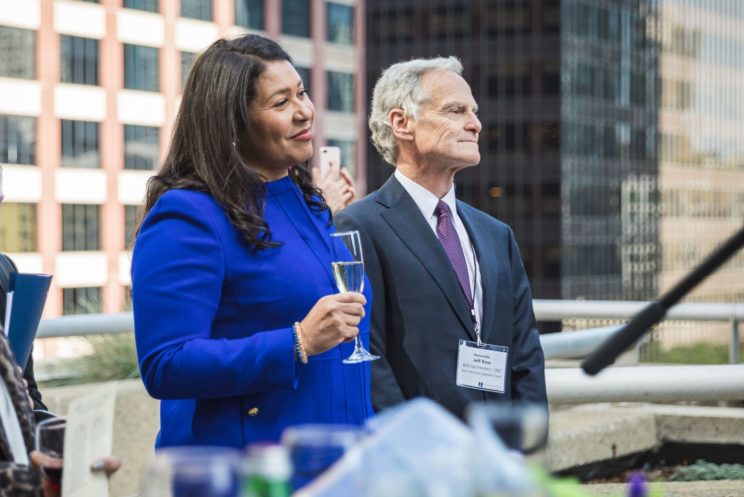
The right people came together at the right places at just the right time to create and launch Law Academy. In 1996, Jeffrey S. Ross, today a judge in San Francisco’s Superior Court, was BASF’s incoming president in search of a pet project. He brainstormed with Kathleen Purcell, a long-time friend who had left the law after 15 years to teach high school. “He wanted his signature project to be about education, a partnership program,” Purcell says. “By the end of lunch, I was doing it with him.” (And she’s a mentor today.) Their enthusiasm and passion for the program were contagious, and they were soon joined by lawyers volunteering as mentors and employers offering internships. (Learn more about the origins and early years of Law Academy in “Students, Mentors Benefit From Law Academy’s 21-Year Partnership” by Laura Ernde, Fall 2018.)
“When we first started, the world was quite a different place,” Judge Ross says. “Back then, we were teaching students how to use computers!” What hasn’t changed in more than two decades is the program’s popularity and positive impact.
Law Academy in the 21st Century
The program is divided into three seasons, each with specific and interconnected focuses. In the fall, mentors help students learn how to present themselves on paper and in person: how to apply for jobs, create résumés and cover letters, and hone interview skills. “Their experiences are far more substantive than they think,” says Steve Berninger, an attorney for the US Environmental Protection Agency who was a mentor for ten years, “and they have skills, even as high school juniors, someone who is hiring would appreciate.” Working in a restaurant, for example, requires being part of a team and handling money.
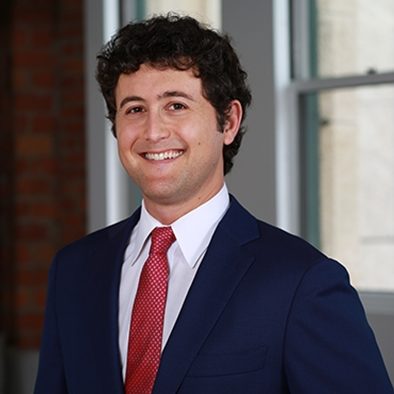
Senior Associate of Farella Braun & Martel
Personally, it’s just a lot of fun. The students’ lively enthusiasm and curiosity refreshes our excitement about the law and gives us a new perspective on what we can do.
An eight-week-long research project, modeled after civil grand juries, is the focus of the spring term. Each team of ten students selects a community issue they feel needs to be addressed, conducts research, creates a report that includes their recommendations, and gives a 35-minute PowerPoint presentation. Past topics included vaping, school shootings, and phone addiction. Spring 2022 issues included pedestrian safety, sexual health awareness, and the impacts of toxic waste contamination on residents of San Francisco’s Hunters Point neighborhood.
As they research, conduct surveys and interviews, interpret results, navigate challenges, and structure their findings to support their project, students also develop critical thinking skills, fundamental skills they can apply in college and in any career they pursue. “I spent three years in law school to learn this!” says Wardell.
Classroom learning is supplemented with experiential learning through paid summer internships at law firms, government agencies, and nonprofit organizations. Early supporters and employers included the City Attorney’s Office, and retailers Macy’s and The Gap. Interns at Farella Braun & Martel (“the stalwart” of the program in BASF President Mary McNamara’s words) do rotations to help attorneys around the office. “We try to assign work that’s useful and also applicable to what that person can bring to the table,” says Hofmayer. Students who are computer-savvy might contribute to litigation or transactional work by fact-finding, googling, conducting factional research, and preparing short write-ups. Zepeda interned at City Hall, working with Congresswoman Jackie Speier’s staff “filing paperwork, shadowing, seeing the overall day-in-the-life of politicians and attorneys.”
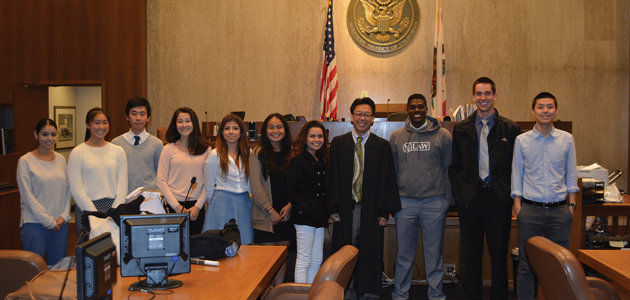
Mentors Are the Lifeblood of the Program
Mentors work side-by-side with students throughout the program. “Firms don’t give pro bono hours for mentoring,” Rosenberg says, so for many attorneys who support Law Academy, this is a passion project, a way to give back and pay forward their legal experience to new generations. The classroom time commitment amounts to about three hours a week on Wednesday mornings. “It’s unlike any other period in your week, it’s very rewarding,” say Berninger (who received pro bono credit when he was at Pillsbury). “Try it! You’ll find you have a lot to offer.”
The ideal volunteer, says Harriman, is “somebody who enjoys working with high school students and understands they have a lot going on.” The work is hands-on, as mentors engage with and guide students in their endeavors. “A mentor must be creative, always leading and questioning, able to give quick feedback, saying, ‘Good! And have you thought about this?’” says Harriman, who adds mentoring is great for retired attorneys who have the time to be consistently involved.
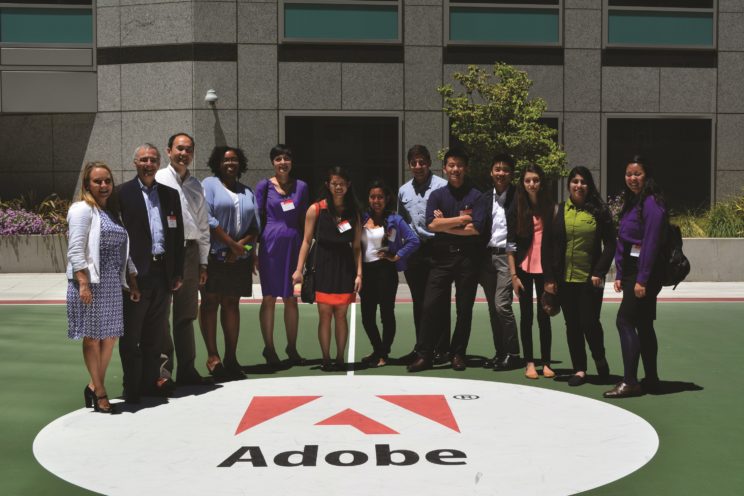
“Personally, it’s just a lot of fun,” says Hofmayer. “The students’ lively enthusiasm and curiosity refreshes our excitement about the law and gives us a new perspective on what we can do.”
The rewards come through seeing the impact of the program on students’ lives. “It’s a life-changing experience,” says McNamara. “It raises their expectations of what they can do for themselves.” Purcell revels in “watching these young people who sat quietly at the beginning, waiting for things to happen—now making things happen, speaking up.” Safir recalls one of her favorite students, a “defiant, sassy, brilliant” young woman who had previously been kicked out of school. That student blossomed in the program, excelled in an internship, and earned bachelor’s and master’s degrees in social work. “She’s now a homeowner,” says Safir, “and she’s thriving.”
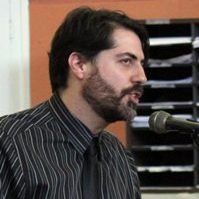
Teacher/Director of Law Academy at Balboa High School
We want more diversity; this is beneficial to all of us. We need more people who look like you, representing you.
Envisioning the Future
Hopes for replicating and expanding Balboa’s model, to rejuvenate and enrich public schools, and to reach and benefit more students from a variety of backgrounds, are not pipe dreams, for this has already been accomplished. In 2003, Safir and Matt Alexander, who were both Law Academy teachers at Balboa, co-founded and served as co-principals for June Jordan School for Equity. (Currently, Safir is a writer, educational consultant, and author of Street Data; Alexander is a member of the SFUSD School Board.) “Law Academy was absolutely fuel for the vision of June Jordan,” Safir says. They envisioned creating an entire school where the whole day felt like Law Academy, and the result is a campus where “social justice themes are woven into the entire curriculum.”
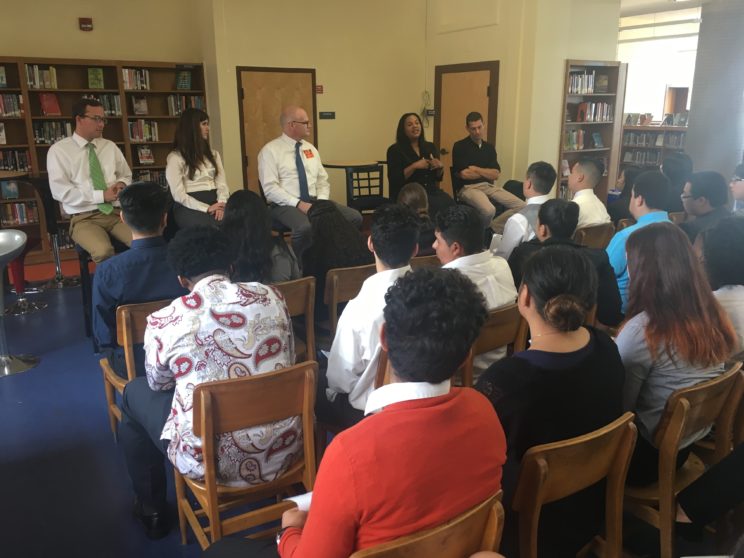
There’s also interest in teaming with Opportunities for All, a collaboration between the city of San Francisco and the school district that Mayor London Breed introduced shortly before COVID hit. Similar to Law Academy’s goals, Opportunities for All seeks “to connect young people of all backgrounds to paid employment, job training, and mentorship opportunities.”
The big-picture goal, of course, is to feed the pipeline into the legal profession with well-educated, prepared, and passionate candidates. “We want more diversity; this is beneficial to all of us,” Rosenberg says. “We need more people who look like you, representing you.”
Teachers, mentors, coordinators, employers—the people who have nurtured and supported Law Academy in the past—are the program’s secret to success. “We know we’re lucky,” says Rosenberg.
Luck, it can be argued, is only part of it. Law Academy will continue to succeed because of the innovation, commitment, passion, and generosity of people who see its value. The prospects are bright for a golden anniversary.
How you can support Law Academy:
- Become a mentor: Contact Jonathan Harriman at jonathan.harriman@gmail.com.
- Hire a summer intern: Contact Zoe Spielvogel at SFUSD’s Career Technical Education (CTE) office, spielvogelz@sfusd.edu.
- Contribute funding: Donate online at https://www.sfbar.org/jdc/donate/. (Select “Diversity Educational Programs”, then “Diversity Pipeline Programs.” In “Other,” type “Law Academy”.) Or contact Kate Applebaum, JDC’s Development Director, at 415.782.8704 or kapplebaum@sfbar.org.
- Learn more: Contact JDC’s Diversity Pipeline Programs Director, at diversity@sfbar.org.
Sources (including embedded hyperlinks):
- Balboa High School: https://www.sfusd.edu/school/balboa-high-school
- Biotech Academy: http://www.biotechpartners.org/students.html
- CSULA’s “Law and Society” BA: https://www.calstatela.edu/academic/soc/Copy%20of%20BA%207-9-12.htm
- Commissioner Matt Alexander: https://www.sfusd.edu/about-sfusd/board-education/commissioner-matt-alexander
- Congresswoman Jackie Speier: https://speier.house.gov/
- Farella Braun + Martel: https://www.fbm.com/
- Golden Gate Univ. School of Law: https://law.ggu.edu/
- Harriman Law: https://www.harriman.law/
- Law Academy: https://www.sfusd.edu/school/balboa-high-school/school-information/pathways/law
- June Jordan School for Equity: https://www.jjse.org/
- Mayor London Breed: https://sfmayor.org/about-mayor
- Mission High School: https://www.sfusd.edu/school/mission-high-school
- Opportunities for All: https://www.opps4allsf.org/
- Pathways at Balboa: https://www.sfusd.edu/school/balboa-high-school/school-information/pathways
- Pillsbury: https://www.pillsburylaw.com/en/offices/san-francisco.html
- SF District Attorney’s Office: https://sfdistrictattorney.org/
- SFPD Cadet Program: https://www.sanfranciscopolice.org/your-sfpd/careers/civilian-job-openings/san-francisco-police-cadet-program
- SF City Attorney’s Office: https://www.sfcityattorney.org/
- SF Sheriff Cadet Program: https://www.sfsheriff.com/join-our-team/cadet
- Shane Safir: https://shanesafir.com/
- “Students, Mentors…” 2018 article: https://www.sfbar.org/wp-content/uploads/2021/06/2018-SFAM-Q4-law-academy.pdf
- US EPA: https://www.epa.gov/
Sources for opening paragraph:
Marriage: U.S. Census Bureau. "Number, Timing, and Duration of Marriages and Divorces." April 22, 2021.
Small business: https://www.nerdwallet.com/article/small-business/small-business-survival and https://www.sba.gov/sites/default/files/Business-Survival.pdf (Source: Bureau of Labor Statistics)
Nonprofits: National Center on Charitable Statistics, 2019 quote from https://nanoe.org/nonprofits-fail/#:~:text=The%20real%20data%20from%20National,of%20a%20strategic%20plan%2C%20among
ABOUT THE AUTHOR:
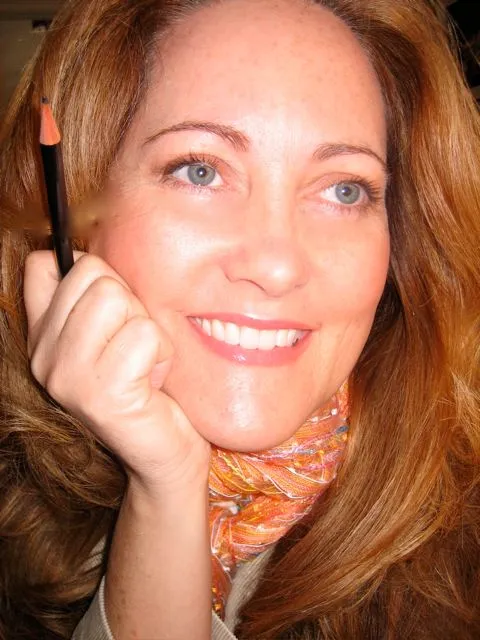 Kathleen Guthrie Woods is a long-time contributor to San Francisco Attorney magazine. Previous articles include “Miranda at Fifty” (Fall 2016) and “Meet Nemo, San Francisco United Family Court’s Facility Dog” (Winter 2018).
Kathleen Guthrie Woods is a long-time contributor to San Francisco Attorney magazine. Previous articles include “Miranda at Fifty” (Fall 2016) and “Meet Nemo, San Francisco United Family Court’s Facility Dog” (Winter 2018).
